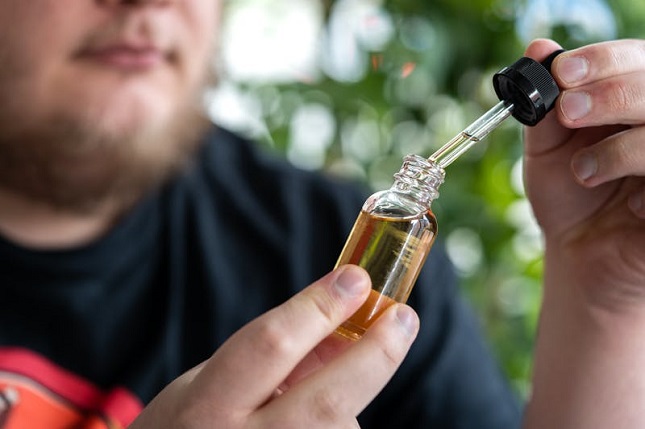Brewing beer with honey is a classic homebrew idea that’s as good as ancient. We strongly doubt this can ever get old, not if the blend of exciting aromas remains in the beer world.
Undeniably, honey is a sweet, flavorful ingredient that can elevate the flavors of anything from tea and coffee to cocktails and punches.
Although brewing with honey is relatively simple, it can yield excellent results. Adding this unique ingredient to beer produces drinks with complexity and sweetness that can’t be found anywhere else.
So, let’s get the curiosity out of the way. We’ll look at the basics of brewing beer with honey, how to pick the right honey, and some creative recipes you can use to make flavorful drinks.
The Unique Flavor Profile of Honey in Brewing
Brewing with honey adds a peculiar flavor profile to your favorite drinks. From meads and beer to coffee and tea, you can use honey to bring out the best of your brews.
Honey’s most distinctive taste comes from its complex blend of flowers, fruits, and herbs. Depending on where the bee was foraging, you might find clover, lavender, melon, or even star anise notes in the final product.
Honey is also sweet, but subtly so – thoughtfully used in a brew, it will balance out flavors without being overbearing.
And finally, there’s the texture. Honey imparts a smooth mouthfeel that carries through flavors rather than masking them. So you can be sure the honey character will punctuate your drink.
These peculiar properties make it an exciting ingredient in many recipes! The best part is that almost any drink — alcoholic or otherwise — would benefit from its flavor and texture profile. So why not give it a try?
Why Add Honey to Beer?
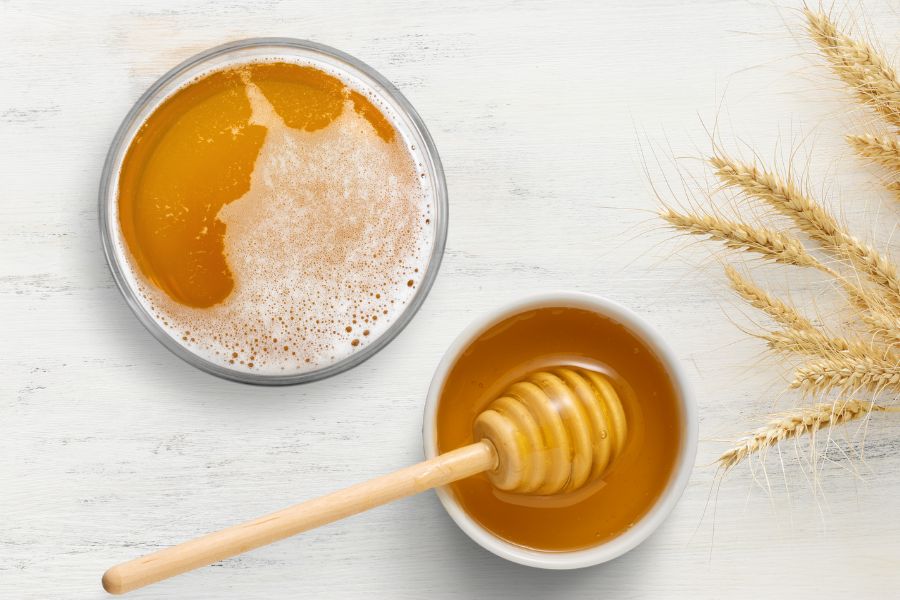
Adding honey to your brews fills your drink with flavor and sweetness without an overpowering presence of sugar.
Using just one type of honey results in a predictable flavor profile, but why not experiment with different varietals?
If you want to add a strong honey character, try using wildflower or orange blossom, honey. For a robust flavor profile, consider buckwheat honey or avocado blossom. You could even blend several types of honey to make magic!
Just remember that adding priming sugar to the honey itself will create alcohol. So, take that into account when adding it to your brews.
The trick is to add honey after primary fermentation has taken place. This will prevent too much alcohol production while more complex flavors and aromas seep from the honey.
A well-crafted beer or mead using various types of honey fosters an unforgettable drinking experience. With some creativity and experimentation, you’ll soon master the art of brewing with honey!
Choosing the Right Type of Honey for Your Brew
Now, let’s talk about the type of honey you should use when brewing drinks. After all, different types of honey will bring different flavors and textures to your drink!
The key is to find a flavor profile that complements the other ingredients in your beverage:
Light-Colored Honey
Light-colored honey like clover, orange blossom, or tupelo has a mild flavor and floral aroma. They’re best for sweetening hot and cold tea-based beverages and tropical drinks.
Medium-Colored Honey
Like alfalfa or eucalyptus, honey with a golden hue have slightly more intense flavors than light-colored honey.
These honey pair well with ginger, lemon, and other herbs while balancing out bitter notes in coffee-based drinks.
Darker-Colored Honey
Darker honey, like buckwheat, usually has intense flavors that taste more full-bodied than lighter honey varieties.
They are ideal for creating robust flavored alcoholic beverages like mead or beer brewed with honey.
By considering the flavor profile of your ingredients and giving the advice above, you can choose the right type of honey for your next project!
Consider buying bulk honey from local farmers, as they are too happy to strike a juicy deal.
How Much Honey to Use When Brewing?
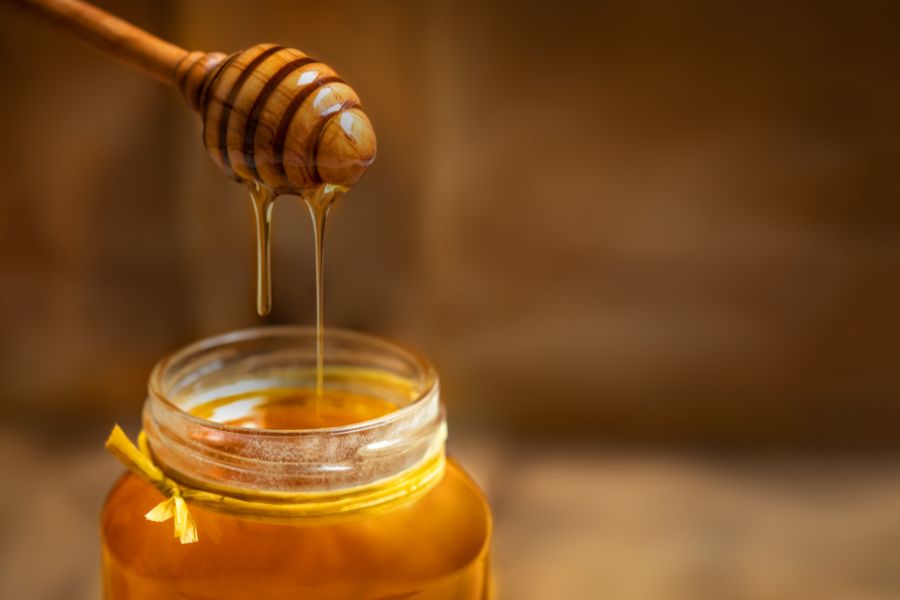
Getting the sweet-tart balance of honey in your beverage is the key to a delicious drink. Trust us; you want to use the exact amount of honey necessary.
Start Small
The best rule of thumb is to start small and work your way up. The honey your drink needs depends on acidity and the desired sweetness level.
So if you’re adding honey to lemonade, for example, start with one tablespoon for a quart of liquid and see how it goes.
Taste Test Along the Way
Taste as you go and adjust as necessary. Depending on your taste buds, that one tablespoon may be too sweet or tart. Add more or less honey until you get the right honey flavor balance.
Remember that honey can dissolve completely, so ensure each batch has been thoroughly mixed before judging the taste.
Note that residual sweetness also intensifies as liquids reduce. Thus, if you’re making something like a reduction sauce, factor this in when deciding how much honey you should use.
You may add more than expected so that a more robust honey flavor is present after finishing the cooking process.
Honey Beers Recipes to Get You Started
Brewing with honey, or mead-making, is an ancient practice enjoyed for thousands of years. Honey is the main ingredient in mead, giving the final product a distinct aroma and sweetness.
These recipes will result in a blend of brews with subtle or more robust honey flavors.
Honey Ale
Honey ale is a delicious and easy-to-make beer that combines the sweetness of honey with the bitterness of hops. Here’s a recipe for a 5-gallon batch:
Ingredients
- 9 lbs of light malt extract
- 1 lb of honey
- 1 oz of Cascade hops
- 1 package of American Ale yeast
Instructions
- Heat 2.5 gallons of water in a large pot to 155°F.
- Steep the crushed grains in a grain bag for 20 minutes.
- Remove the grains.
- Add the malt extract and heat the honey in the pot.
- Bring the mixture to a boil and add the hops.
- Boil for 60 minutes to ready for less honey character, then remove from heat and cool to 70°F.
- Transfer the mixture to a sanitized fermenting vessel and add the yeast.
Honey Wheat Beer
Honey wheat beer is a light and refreshing beer that combines honey’s sweetness with Wheat’s crispness. Here’s a recipe for a 5-gallon batch:
Ingredients
- 4 lbs. Wheat Malt
- 3 lbs. Pilsner Malt
- 1 lb. Honey
- 1 oz. Hallertauer hops
- 1 oz. Saaz hops
- White Labs WLP300 Hefeweizen Ale yeast
- Water
- Ice
Instructions
- Mash the grains: Heat 3 gallons of water to 160°F in a large pot. Add the wheat and pilsner malt to the pot and stir until the temperature reaches 150°F. Let the grains mash for 60 minutes.
- Sparge the grains: Heat 3 gallons of water to 170°F in a separate pot. Pour the water over the grains to rinse off the sugars. Collect the wort in a separate pot.
- Boil the wort: Heat the wort to a boil. Add one oz. of Hallertauer hops and boil for 60 minutes.
- Add the honey: Add one lb. of honey during the last 10 minutes of the boil. This will provide a subtle sweetness to the beer.
- Add the Saaz hops: Add one oz. of Saaz hops during the last 5 minutes of the boil to infuse a light, floral aroma into the beer.
- Chill the wort: Remove the pot from the heat and place it in an ice bath to cool the wort to around 70°F.
- Ferment the beer: Transfer the wort to a fermenter and add the yeast. Allow the beer to ferment for 2-3 weeks at a temperature between 65-75°F.
- Bottle or keg the beer: Transfer the beer to a bottling bucket or keg after fermentation. Carbonate the beer and let it condition for at least a week before enjoying it.
Honey Brown Ale
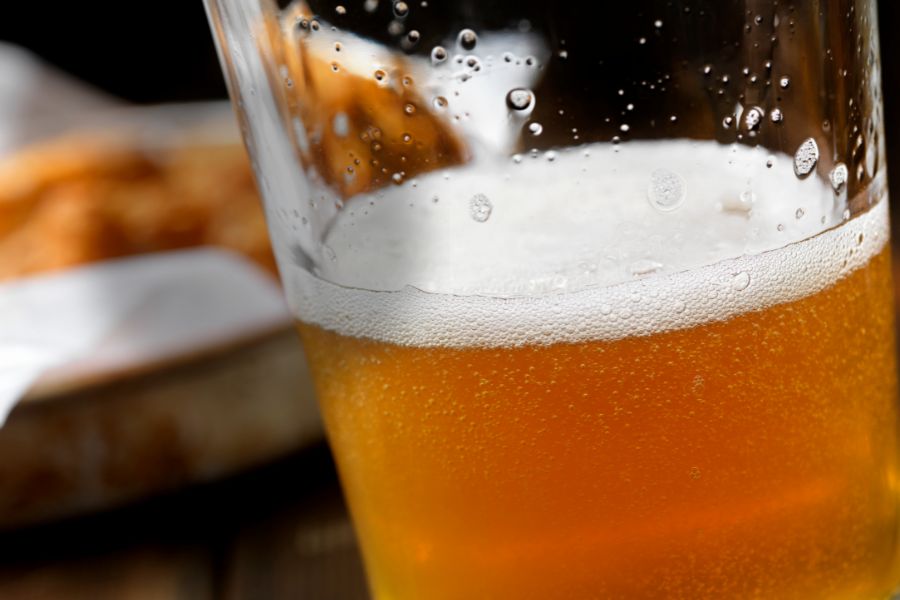
Honey Brown ale is a rich and flavorful beer that combines the sweetness of honey with the roasted malt flavors of a brown ale. Here’s a recipe for a 5-gallon batch:
Ingredients
- 7 lbs of amber malt extract
- 1 lb of honey
- 1 lb of crystal malt
- 4 oz of chocolate malt
- 1 oz of Fuggles hops
- 1 package of English Ale yeast
Instructions
- Heat 2.5 gallons of water in a large pot to 155°F.
- Steep the crushed grains in a grain bag for 20 minutes.
- Remove the grains and add the amber malt extract and honey to the pot.
- Bring the mixture to a boil and add the Fuggles hops.
- Boil for 60 minutes, then remove from heat and cool to 70°F.
- Transfer the mixture to a sanitized fermenting vessel and add the yeast.
- Transfer the honey solution to a secondary fermenting vessel, and let it age for 2-4 weeks before bottling.
So whatever your experience level or favorite beer style, try one of these honey beer recipes and see how it turns out!
Mead Recipes: Ancient History, Modern Appeal
Mead, a beverage crafted from honey, water, and yeast, has existed for centuries. As a result, ancient people were very familiar with mead’s sweet aroma and flavor.
Even today, it is making a resurgence in the craft brewing world. So if you want to master the art of brewing with honey, mead recipes are a great place to start.
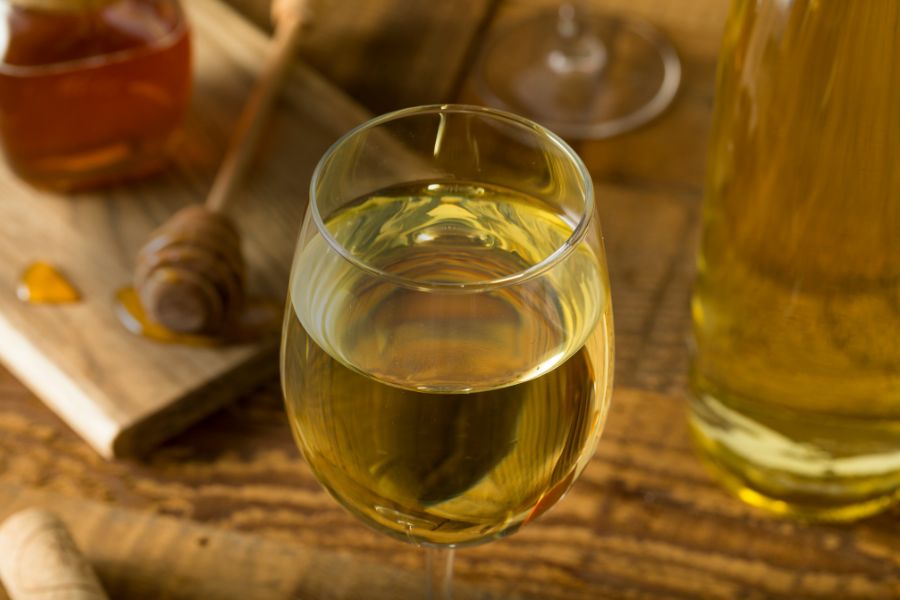
From dry to sweet and even sparkling meads, there’s something for every palate. Here are some of our favorite classic and modern mead recipes that you can make in your very own home brewery:
Dry-Style Mead Recipes
Traditional Dry Mead
To make this classic bone-dry mead with a hit of hops bitterness, blend honey with spring water and Himalayan Pink Salt. Then ferment it with English Ale Yeast or Belgian Ale Yeast.
Orange Blossom & Lavender Dry Mead
Try blending light-colored honey with orange blossom water and lavender for an aromatic take on a dry mead recipe. Basil Hayden’s KY Bourbon Yeast is perfect for fermenting this top-notch blend.
Dark & Spiced Mead Recipe
This dry-style mead combines darker honey, like clover or wildflower, with sweet raisins. It is coupled with spices like cinnamon sticks and cloves before fermenting it with Red Star Montrachet yeast.
Sweet-Style Mead Recipe
Traditional Sweet Mead
The essential ingredients are simple: honey, spring water, Himalayan Pink Salt, and wine yeast like White Labs K97 or Lalvin EC1118. The mixture of these ingredients will give you that perfect balance of sweetness and acidity you crave in a sweet mead recipe.
The National Honey Board’s Guide
Regarding the quantity of honey to use in brewing, the National Honey Board suggests using 1-2 pounds of honey per 5-gallon batch of beer.
This quantity is based on several factors, including the desired flavor profile, sweetness level, and alcohol content of the beer.
Again, the amount of honey hinges on the type of beer being brewed, as certain styles may require more or less honey to achieve the desired flavor profile.
Using too much honey in a beer could leave an overly sweet and cloying taste, while using too little may not produce enough flavor or sweetness.
The recommended 1-2 pounds per 5-gallon batch is a good starting point for brewers new to using honey in their recipes. It will generate a strong honey flavor without overpowering the other ingredients in the beer.
Furthermore, high-quality honey has a more complex and nuanced flavor profile, while lower-quality honey may produce a more one-dimensional taste.
The National Honey Board also provides guidelines on when to add honey to the beer.
It suggests that you add the honey during the last 10-15 minutes of the boil, which allows the honey to dissolve and mix with the wort thoroughly.
It also minimizes the risk of burning or caramelizing the honey, resulting in off-flavors and aromas in the finished beer.
Conclusion
Brewing with honey is an art that takes some patience and practice to master, but it’s well worth it! Honey has a wide range of flavors and aromas, so you can experiment with different kinds of honey and find the perfect combination for your custom drinks.
Honey can also add sweetness or compensate for bitterness when used in brewing. The possibilities are endless once you start brewing with honey!
All that’s left to do is start experimenting and get creative!



